
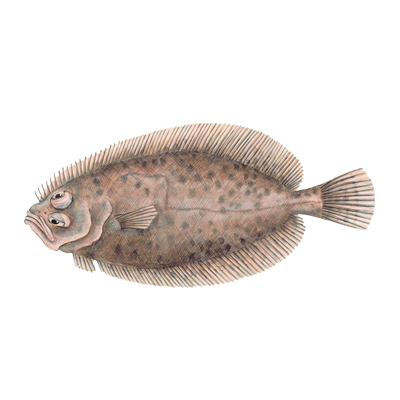
Also known as Cornish Sole, Megrim is a deep water, flatfish which tastes incredible. Like a flat version of a bass a megrim has a huge mouth used to suck up its prey, which mainly consists of smaller fish. Megrims are caught by Cornish trawlers who are using modern, more selective fishing gear. They are pale in colour and have delicious tender meat. Traditionally this fish has not been eaten in the UK with the majority of landings being exported to france and spain where they are far better appreciated but brexit has made this more diffcult and local UK markets are now being sought urgently.
Megrim are caught by trawl fisheries in deeper water by Cornish vessels. The stocks of megrim are relatively well studied. Recent trends show that stocks are abundant and that fishing effort has decreased well below Maximum Sustainable Yield. In Cornwall the minimum landing size is 25cm. Cornwall’s trawling fleet has been reduced in size in the last 20 years. The majority of trawlers are using 110mm mesh and square mesh panels which allow juvenile fish to escape more easily. Megrim catches are capped by an EU total allowable catch (Quota).
598 tonnes of megrim were landed to Cornish ports in 2021 with a value of £1.1 million (MMO data).
Updated July 2023
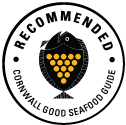
Cornwall VIIe,f,g and h
Demersal trawls are large nets that are pulled through the water with the bottom edge of the net touching the seabed. At each edge the net is pulled open by metal ‘trawl doors’. Sometimes referred to as Otter trawling.
Learn more
Cornwall, VIIe, f, g and h
Beam trawls are nets with a steel beam that holds the net open. The belly of the net is made of chains and the upper surface of the net is mesh. Beam trawlers pull two nets along the seabed simultaneously.
Learn moreCornwall Good Seafood Guide rates fish on sustainability using a scale of 1 to 5.
1, 2 and 3 are recommended, Fish to avoid are rated 5.
We use the system devised by the Marine Conservation Society (MCS) so our scores are comparable with the scores produced by MCS for the UK and fisheries from all around the world. For more information on scoring click here.
Megrim stocks are studied by ICES to a good standard and this stock was benchmarked in 2016. The latest ICES data shows that stocks are healthy, fishing effort is well below MSY and that stocks are healthy. Landings to Cornish ports are steady, with a slight downturn in 2020 due to the Covid pandemic resulting in reduced landings.
Megrim stocks are managed through the EU Common Fisheries Policy which sets an annual quota. EU minimum landing size for megrim is 20cm but within Cornwall’s 6 mile limit Cornwall Inshore Fisheries and Conservation Authority have set a minimum landing size of 25cm.There is currenlty no long term management plan for Megrim in EU waters but the CFP is committed to bring all commercial stocks to maximum productivity (Maximum sustainable yield) by 2020.
The majority of megrim landed to Cornish ports are caught with beam trawls and demersal trawls. The Cornish beam trawl fleet has been much reduced in the last 20 years and the vessels themselves are far smaller than typical Scottish and Dutch beam trawlers. Beam trawling has been shown to have a considerable impact on the seabed, damaging fragile sessile invertebrates thus changing composition of benthic communities. FAO 2005. Sewell and Hiscock 2005 Significant measures are being taken to improve selectivity and reduce impacts of trawl fisheries in the south west including, square mesh panels, roller ball foot ropes and CCTV monitoring of catches to prove low levels of discards. In comparison to trawlers from other areas of Europe beam trawlers in Cornwall are all relatively small and there are limits on size of beams being used within Cornwall IFCA district. Negative impacts of trawling are greatest in those areas where seabed habitats are not subject to high levels of natural disturbance. The rates of recovery for benthic communities following intensive trawling disturbance may range from weeks to years, with rates of recovery depending on rates of immigration, recruitment and growth.
Seafish responsible sourcing guide megrim
MMO landings data
Cheung, W.W.L., T.J. Pitcher and D. Pauly, 2005. A fuzzy logic expert system to estimate intrinsic extinction vulnerabilities of marine fishes to fishing. Biol. Conserv. 124:97-111 (www.fishbase.org)
CEFAS Fisheries Science Partnership 2003 - 2013 Western anglerfish
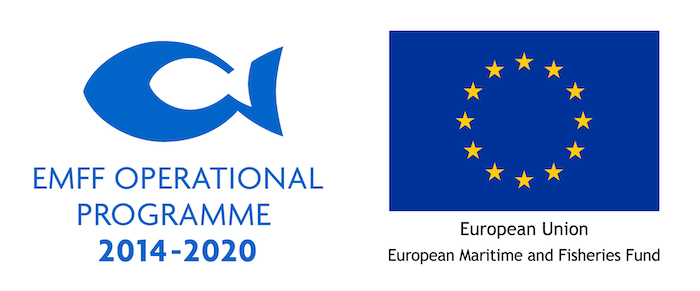
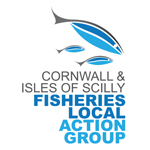
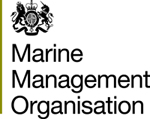
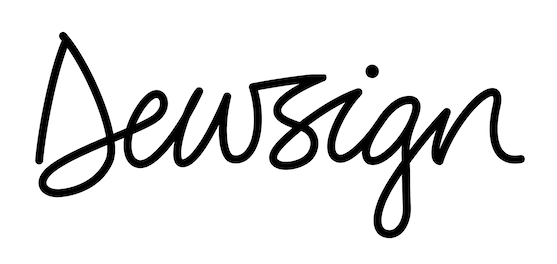


Cornwall Good Seafood Guide is underpinned by the Marine Conservation Society (MCS) Good Fish Guide. The first UK consumer guide to sustainable seafood. For more information visit www.fishonline.org
Cornwall Good Seafood Guide is here to help us all make sustainable seafood choices. Choices that will help us keep the oceans healthy and Cornish fishers' futures safe. This website is funded by Cornwall Wildlife Trust. If you would like to make a meaningful difference to the health of our oceans, please consider making a donation to the Cornwall Wildlife Trust Ocean Emergency fund. Your donation will help safeguard these remarkable environments, ensuring that they continue to thrive for generations to come. Together, we can be stewards of the seas and champions for a healthier, more sustainable future.